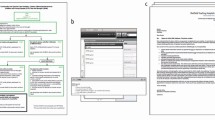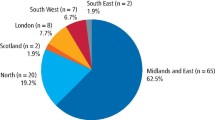Abstract
Introduction The dental team play a vital role in ensuring that vulnerable children are followed up and suspected safeguarding concerns are shared, which includes recognising the importance of missed dental appointments. Concerns are less likely to be missed when there are robust pathways in place. This paper aims to discuss the importance of a was not brought (WNB) pathway for children who miss dental appointments and to offer advice on its implementation in practice.
Methods A three-cycle retrospective case note review was carried out to identify follow-up children who WNB to their dental appointments, and the follow-up that had occurred as a result.
Results In cycle one, 16% of children who were not brought were managed according to the audit standards. Therefore, a WNB pathway was developed and audited three months and 12 months following; cycle two showed 32% adherence with the pathway, and 28% in cycle three. The biggest barrier in all cycles seems to be related to the administration of letters.
Discussion Investigators felt that the possible barriers to achieving audit standards were the implementation of a new dictation system, limited time on clinic and a possible anxiety surrounding the management of safeguarding issues.
Conclusion Pathways and resources have been made available for dental professionals to use in their practice to guide management of children who were not brought to dental appointments. As we have shown, there are barriers to implementation of such pathways which service providers must work to overcome, to protect the children that we treat and ensure that they are being kept safe in line with General Dental Council standards.
Key points
-
This paper highlights the importance of introducing a 'was not brought' (WNB) pathway for children who are not brought to dental appointments, as missed appointments could play a part in a wider picture of child neglect.
-
Results of implementation of a WNB pathway and possible barriers to adherence are discussed.
-
Recommendations have been made on how to create and implement a WNB pathway in general dental practice.
This is a preview of subscription content, access via your institution
Access options
Subscribe to this journal
Receive 24 print issues and online access
$259.00 per year
only $10.79 per issue
Buy this article
- Purchase on Springer Link
- Instant access to full article PDF
Prices may be subject to local taxes which are calculated during checkout


Similar content being viewed by others
References
Harris J, Balmer R, Sidebotham P. British Society of Paediatric Dentistry: a policy document on dental neglect in children. Int J Paediatr Dent 2009; DOI: 10.1111/j.1365-263X.2009.00996.x.
Low W, Tan S, Schwartz S. The effect of severe caries on quality of life in young children. Paediatr Dent 1999; 21: 325-326.
Department for Education. Working together to safeguard children: Statutory guidance on inter-agency working to safeguard and promote the welfare of children. 2015. Available at https://www.gov.uk/government/publications/working-together-to-safeguard-children--2 (accessed January 2020).
General Dental Council. Standards for the Dental Team. 2019. Available at https://www.gdc-uk.org/information-standards-guidance/standards-and-guidance/standards-for-the-dental-team (accessed January 2020).
Powell C, Appleton J. Children and young people's missed health care appointments: reconceptualising 'Did Not Attend' to 'Was Not Brought' - a review of the evidence for practice. J Res Nurse 2012; 17: 181-192.
Care Quality Commission. Not seen, Not Heard, A review of the arrangements for child safeguarding and health care for looked after children in England. 2016. Available at https://www.cqc.org.uk/sites/default/files/20160707_not_seen_not_heard_report.pdf (accessed December 2019).
Woodman J, Brandon M, Bailey S, Belderson P, Sidebotham P, Gilbert R. Healthcare use by children fatally or seriously harmed by child maltreatment; analysis of a. national case series 2005-2007. Arch Dis Child 2011; 96: 270-275.
British Dental Association. Implementing 'Was Not Brought' in your practice: A tool for safeguarding children who miss appointments. 2019. Available at https://bda.org/advice/Documents/Was%20Not%20Brought%20implementation%20guide%20AW.pdf (accessed December 2019).
Kirby J, Harris J. Development and evaluation of a 'was not brought' pathway: a team approach to managing children's missed dental appointments. Br Dent J 2019; 227: 291-297.
Harris J, Elcock C, Sidebotham P, Welbury R. Safeguarding children in dentistry: 1. Child protection training, experience and practice of dental professionals with an interest in paediatric dentistry. Br Dent J 2009; 206: 409-414.
Committee of Postgraduate Dental Deans and Directors. Child protection and the dental team: an introduction to safeguarding children in dental practice. 2006. Available at https://bda.org/childprotection/Resources/Documents/Childprotectionandthedentalteam_v1_4_Nov09.pdf (accessed October 2021).
Acknowledgements
The authors would like to acknowledge the BDA implementation guide based on a WNB pathway developed by Jenny Harris and Jen Kirby. We would like to thank members of the dental team in the Paediatric Dental and Child Safeguarding teams at East Surrey Hospital for their involvement with the pathway and auditing.
Author information
Authors and Affiliations
Corresponding author
Ethics declarations
The authors declare that there are no conflicts of interest.
Rights and permissions
About this article
Cite this article
Ondhia, A., Marshall, S. & Kandiah, T. Implementation of a 'was not brought' pathway in paediatric dentistry. Br Dent J (2021). https://doi.org/10.1038/s41415-021-3572-0
Received:
Accepted:
Published:
DOI: https://doi.org/10.1038/s41415-021-3572-0



